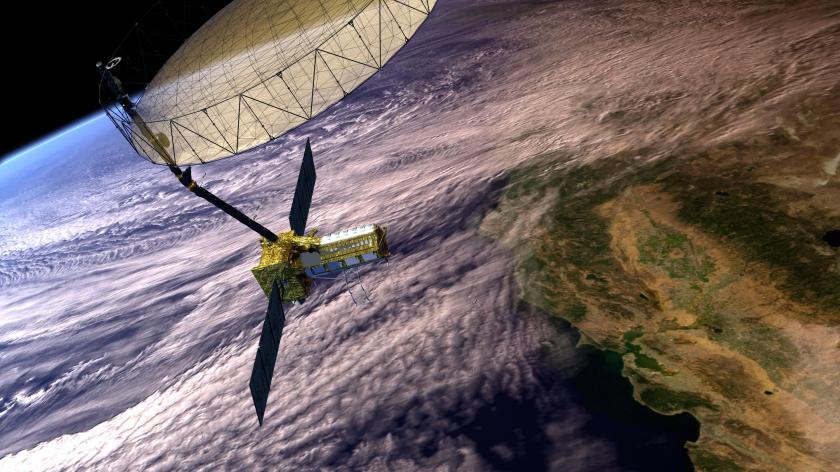
NASA’s work on the radar antenna reflector for the NISAR (NASA-ISRO Synthetic Aperture Radar) satellite is nearing completion in California, with testing under way to verify that this hardware component will deploy properly following launch. Drum-shaped and about 39 feet (12 meters) across, the reflector is among NASA’s contributions to this joint mission with the Indian Space Research Organisation (ISRO). The reflector is designed to transmit and receive microwave signals to and from Earth’s surface, enabling NISAR to scan nearly all the planet’s land and ice surfaces twice every 12 days to collect science data.
In March, the reflector was transported back from India to a specialized facility in California, where reflective tape was applied and other precautionary measures were taken to mitigate temperature increases that could have potentially affected the deployment of the reflector from its stowed configuration before beginning science operations.
Following the successful completion of testing, NASA will transport the reflector to an ISRO facility in the city of Bengaluru, India, where it will be reintegrated with the radar system by teams from NASA’s Jet Propulsion Laboratory in Southern California and ISRO. During this time, a launch readiness date will be determined by ISRO, in coordination with NASA.
The NISAR launch cannot occur between early October 2024 and early February 2025, because that launch window would put the satellite into periods of alternating sunlight and shadows due to the position of the Sun. The resulting temperature fluctuations could affect the deployment of NISAR’s boom and radar antenna reflector.
News Media Contact
Andrew Wang
Jet Propulsion Laboratory, Pasadena, Calif.
626-379-6874
andrew.wang@jpl.nasa.gov
